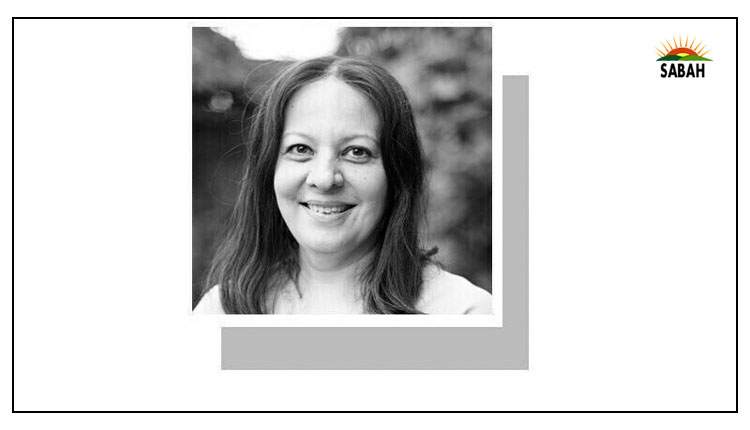Stepping up…Muna Khan
IN 2014, I had the good fortune of attending a talk by my favourite writer, David Sedaris, where he read from a yet to be published piece about his Fitbit, a digital pedometer which is worn on your wrist and monitors your activity. The goal is to take 10,000 steps every day, which is roughly eight kilometres.
When I began graduate school in 2017 in the US, the Fitbit was quite common and more affordable, so I bought one. Soon, I became obsessed with hitting 10,000 steps, then reaching that goal quicker in the day, and then increasing that goal. I did not let Chicagos schizophrenic weather come between me and my steps. Once the weather improved, I would wake at sunrise and walk to get more steps. I was competing against myself. I saw more of the city in my walks than I did as a student reporter.
I caught the walking bug from my father, a lifelong avid walker come rain or shine, and I was determined to continue my practice once back in Karachi.
Sadly, that didnt last long, because I could only walk in parks or the beach near my house and became bored of the same scenery. I was also conscious of my body among a sea of men in these places. I occasionally walk my dogs in the neighbourhood, but DHA is a hot, dirty mess and the walk is not pleasant. The beauty of walking whether aimless or with purpose is that you cannot predict your experience.
Women want to walk without fear of stares and harassment.
Inevitably, every woman says the most enjoyable part of being abroad is walking. Women want to walk without fear of stares, harassment and other worries they carry when they step out of their safety zones in Pakistan. Before people get into a tizzy, please try to understand womens vulnerabilities in public spaces here versus anywhere else. The outdoors, which has always represented freedom, is a melting pot of inappropriate behaviour here. Crime statistics prove it. Between Jan 1 and April 30, a total of 10,365 cases of violence against women were reported to the Punjab police, and 777 to the Sindh police, according to a report by the Sustainable Social Development Organisation. The top two crimes were kidnapping and rape.
I know I am more safe than a woman who travels by public transport but, like her, I am always at risk of something happening to me because of my sex. This is why women bicycle or walk with guards behind them. This is why they drive to gated parks to walk or watch their children play, or take a group of men wherever they go even if its a few minutes away. The idea of walking to nearby places is anathema to most of us. Our cities hate pedestrians.
But for health reasons, I have to resume my walking practice. I will partner with my father. Maybe well take short drives to discover different parts of our neighbourhood.
I am thinking of time spent in Mexico City, which has so many public parks, including the largest one in Latin America which is also one of the oldest in the world: Chapultepec Park. It is spread over 1,695 acres twice the size of Central Park in New York. I joked with my family how it would have been converted into a housing scheme in Pakistan.
Mexico is not immune from greedy property developers eager to gentrify neighbourhoods, but its government is committed to investing in public spaces because it believes such spaces foster a sense of community, culture, and identity. While Mexico has one of the highest crime rates in the world and its own versions of DHA, that divide is not so visible in public spaces in the capital. I went to several places where the government had invested in stationary exercise machines for people to use for free; they also organise all kinds of activities for free. People also use these spaces to practise yoga, dancing, and for various classes. And they love their dogs.
Organisations working on urban issues who promote the right to a city concept giving the power of the city to its citizens can apply for grants to invest in public spaces which may be neglected by the government in favour of wealthier areas. The private sector also invests in public spaces when they create their urban projects because it increases land value.
Since visiting Mexico City, I have been wondering whether it is possible to live under a corrupt government that invests in social services and spaces for citizens to thrive? Maybe healthy, happy citizens will organise to root that corruption out, or negotiate for better services for themselves.
We will soon have a new government. I hope it can make accessibility its guiding principle when creating urban policies and think of ways to invest in our happiness. We cannot afford to segregate ourselves in silos.
Courtesy Dawn












